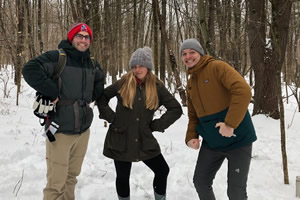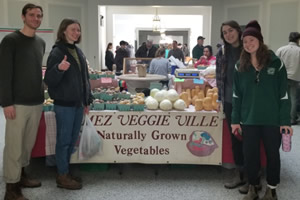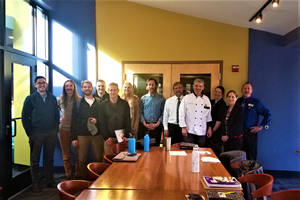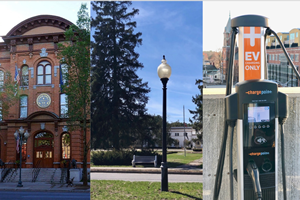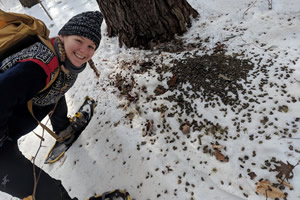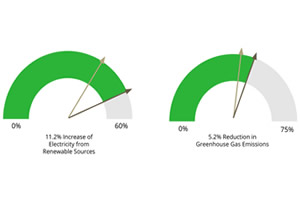|
Be-Forrest Too Late: Management Option for Reducing the Impact of Recreation in the
Adirondack High Peaks Wilderness Complex
Greta Binzen, Colin Cameron, and Sam Vogel
Our research investigated preferences regarding management techniques for addressing
high-use in the High Peaks Wilderness Complex (HPWC) in the Adirondacks. Data was
gathered from 1200 public online surveys, semi-structured interviews with NGOs and
community influentials, and archival analysis. Members of the public and NGOs strongly
supported passive management such as increased funding, enhanced education, and trail
reconstruction. Similarly, both groups were split in support for more direct management
techniques.
Paper is not available. For information, please contact the ESS Program Director.
|
|
Ch-Ch-Ch-Ch-Changes: Shifts in Civic Engagement for the City of Saratoga Springs
Carol Hu and Allison Parra
Changing rates of civic engagement since the 2016 elections have been examined broadly
by researchers across the country, but no such research has yet been conducted for
the City of Saratoga Springs. Our results showed that overall, civic engagement among
both Democrats and Republicans has increased, with social media strategically utilized
among NGOs for organizational and communications purposes. Our findings and recommendations
address outreach strategies, education, and fundraising.
|
|
Growing, Growing, Gone: Identifying Alternative Markets for Surplus and Seconds Produce
to Serve Low-Income Consumers in Saratoga County
Sydney Gellerman, Linnea Harris, Charlotte Hood, and Malcolm Kaletsch
The purpose of this research was to estimate the level of surplus on small-sized farms
in the Capital Region and find markets for this surplus to serve low-income consumers
in Saratoga County. Significant food is left either unharvested or unsold on regional
farms while many residents of Saratoga County experience low food security. Both of
these issues could be alleviated by providing farms with the resources needed to cost-effectively
harvest and distribute surplus to serve those in need.
|
|
25 by 25: An Action Plan for Achieving 25% Sustainable Food Procurement at Skidmore
College by 2025
Isabel Blumenthal and Fin Tevlin
Skidmore has committed to 25% sustainable food procurement by 2025. Progress has been
made towards this goal but significant work remains, and achievement will require
increased expenditure. We assembled a portfolio of projects that address this goal
and assessed their feasibility. Together, these projects could account for the increased
sustainable food expenditure. Moreover, they support sustainable local food, increase
educational opportunities on campus, reduce environmental impact, and solidify institutional
purchasing commitments.
|
|
Bright Lights and Charged Cars: Improving Energy Efficiency in Saratoga Springs
Martha Belshaw, Michaela Bonforte, and Nick DeBlasio
Saratoga Springs has been a Climate Smart Community engaged in reducing greenhouse
gas emissions and improving climate resilience since 2011, but there is room for improvement
in the city’s energy efficiency sector. The implementation of LED lighting in both
City building indoor lights and historic street lights, as well as the installation
of new EV charging stations, will increase the energy efficiency and decrease the
greenhouse gas emissions of Saratoga Springs, while expanding the sustainability portfolio
of the City.
|
|
Is Skidmore Carbo Loading? Establishing a Baseline Carbon Inventory of Skidmore’s
Northern Lands
Robbie Heumann, Sofia Jenssen, and James Lytton
We set out to establish a baseline carbon inventory of Skidmore's unmanaged forested
lands, 60 of which have been logged, in Stables, Kellogg, Homestead, and Compost parcels.
We sampled aboveground (trees, deadwood, and leaf litter) and belowground carbon (soil
0-10cm & soil 10-20cm in 42 15m-radius plots throughout the parcels. We found that
Stables and Kellogg held carbon densities above a baseline of common practice for
the area, indicating the viability of a carbon sequestration project to reduce Skidmore's
greenhouse gas emissions.
|
|
From Rooves to Rivers: Moving the Needle on Skidmore’s Energy Goals
Garrett Flanagan, Phoebe Martell-Crawford, and Brad Sachs
Skidmore College has committed itself to reaching 60% of electricity from renewable
sources and a 75% reduction in GHG emissions by 2025. Skidmore is currently at 40%
for each of these goals. We propose four projects (solar on campus, community shared
solar, alternative student housing, and hydropower), which, if implemented, would
increase our share of electricity from renewable sources to 51.2% and reduce our GHG
emissions by 5.2%. Engagement from students and community members would also increase.
|

